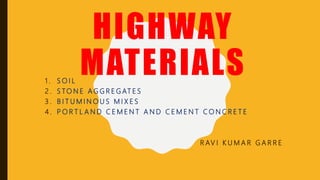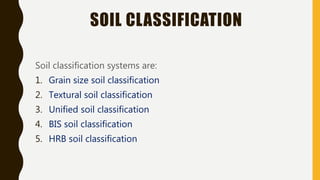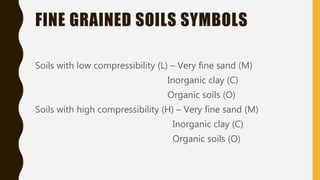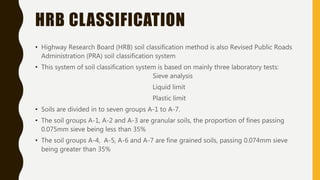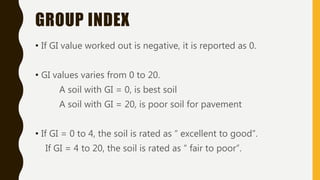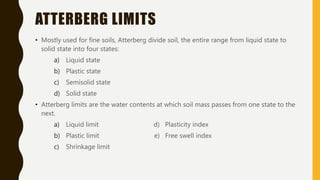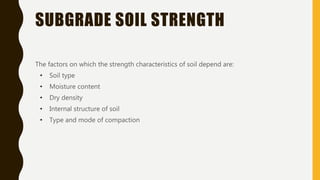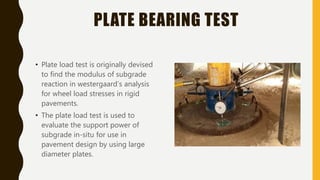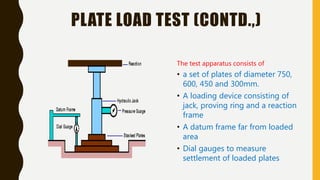The document discusses various highway materials, primarily focusing on soil characteristics, classification systems, and testing methods relevant for highway construction. It outlines the properties essential for soil to be considered suitable for highway use, describes classification systems such as the unified soil classification and HRB classification, and details testing methods like the California Bearing Ratio (CBR) test and plate load test. Key points include the significance of soil properties, compaction techniques, and the criteria for evaluating subgrade soil strength.
